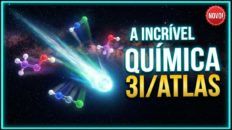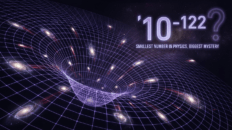
 Alguém aí deu aquele sorriso para Saturno, na última sexta-feira, dia 19 de Julho de 2013? Se você deu, e mesmo se você não deu, aqui está como você, e qualquer outra pessoa na Terra, apareceu para a sonda Cassini a uma incrível distância de 1445853180 quilômetros.
Alguém aí deu aquele sorriso para Saturno, na última sexta-feira, dia 19 de Julho de 2013? Se você deu, e mesmo se você não deu, aqui está como você, e qualquer outra pessoa na Terra, apareceu para a sonda Cassini a uma incrível distância de 1445853180 quilômetros.
A imagem acima é uma composição colorida feita a partir das imagens brutas da Cassini feitas nos comprimentos de onda da luz visível, vermelho, verde e azul. Como é uma imagem bruta ainda, podemos ver algumas estrelas de fundo e algum ruído que deverá posteriormente ser retirado pelo processamento que a NASA dá a essas imagens.

A Lua é o ponto brilhante logo abaixo e a esquerda da Terra que é o ponto mais brilhante com uma forma que lembra uma estrela.
A Cassini adquiriu essa imagem enquanto registrava frames do planeta Saturno em um eclipse contra o Sol, entre as 22:24:00 UTC do dia 19 de Julho de 2013 e as 02:43:00 UTC do dia 20 de Julho de 2013. Na hora da sonda Cassini, a Terra foi imageada entre as 22:47:13 UTC e as 23:01:56 UTC do dia 19 de Julho de 2013.
O mundo todo foi convidado para sorrir para Saturno, numa campanha que começou às 18:27 da última sexta-feira, esse tempo foi o suficiente para que todos pudessem fazer imagens e a esperança era que uma onda chegasse até a sonda Cassini um pouco antes dessa maravilhosa ser feita. Essa foi a primeira vez que a população da Terra foi avisada antes e teve tempo de fazer imagens antes que a Terra fosse fotografada dos confins do Sistema Solar por uma sonda robótica.

A imagem do nosso planeta e da Lua, simplesmente se apresenta como pontos brilhantes contra a escuridão e a profundeza do espaço, isso lembra e muito a passagem do livro Pálido Ponto Azul de Carl Sagan, onde ele faz uma bela reflexão sobre uma imagem parecida, na primeira vez que uma sonda, a Voyager, fez uma imagem da Terra também dos confins do Sistema Solar. A mensagem está abaixo, deixei ela em inglês mesmo para que vocês possam sentir o mesmo que ele sentiu ao escrevê-la:
“From this distant vantage point, the Earth might not seem of any particular interest. But for us, it’s different. Consider again that dot. That’s here, that’s home, that’s us. On it everyone you love, everyone you know, everyone you ever heard of, every human being who ever was, lived out their lives. The aggregate of our joy and suffering, thousands of confident religions, ideologies, and economic doctrines, every hunter and forager, every hero and coward, every creator and destroyer of civilization, every king and peasant, every young couple in love, every mother and father, hopeful child, inventor and explorer, every teacher of morals, every corrupt politician, every “superstar,” every “supreme leader,” every saint and sinner in the history of our species lived there – on a mote of dust suspended in a sunbeam.
The Earth is a very small stage in a vast cosmic arena. Think of the rivers of blood spilled by all those generals and emperors so that, in glory and triumph, they could become the momentary masters of a fraction of a dot. Think of the endless cruelties visited by the inhabitants of one corner of this pixel on the scarcely distinguishable inhabitants of some other corner, how frequent their misunderstandings, how eager they are to kill one another, how fervent their hatreds.
Our posturings, our imagined self-importance, the delusion that we have some privileged position in the universe, are challenged by this point of pale light. Our planet is a lonely speck in the great enveloping cosmic dark. In our obscurity, in all this vastness, there is no hint that help will come from elsewhere to save us from ourselves.
The Earth is the only world known so far to harbor life. There is nowhere else, at least in the near future, to which our species could migrate. Visit, yes. Settle, not yet. Like it or not, for the moment the Earth is where we make our stand.
It has been said that astronomy is a humbling and character-building experience. There is perhaps no better demonstration of the folly of human conceits than this distant image of our tiny world. To me, it underscores our responsibility to deal more kindly with one another, and to preserve and cherish the pale blue dot, the only home we’ve ever known.”
— Carl Sagan (1934–1996)

Fonte:
http://www.universetoday.com/103611/what-the-earth-and-moon-look-like-from-saturn/







Comente!